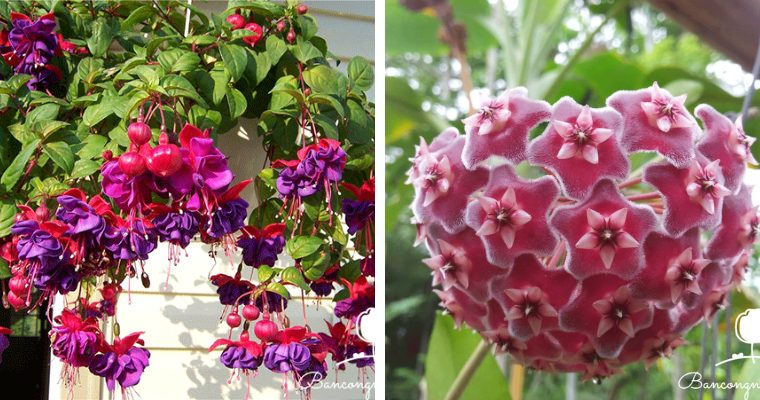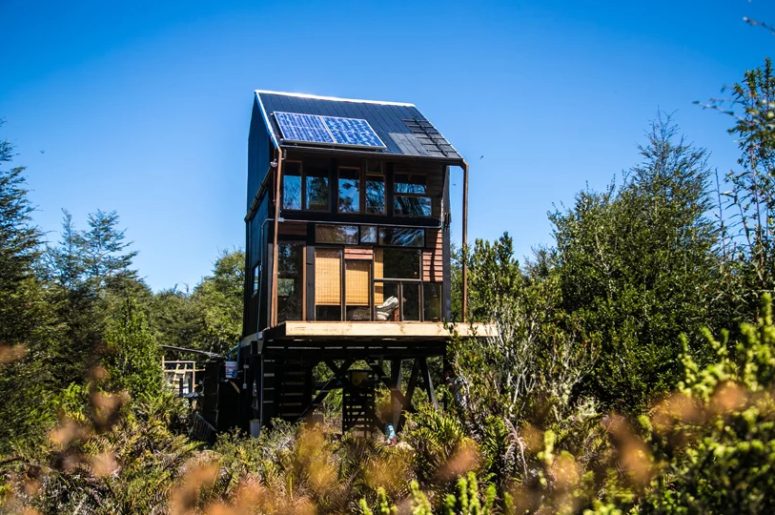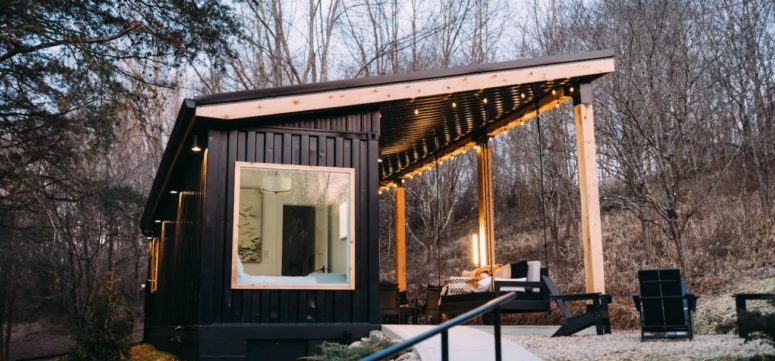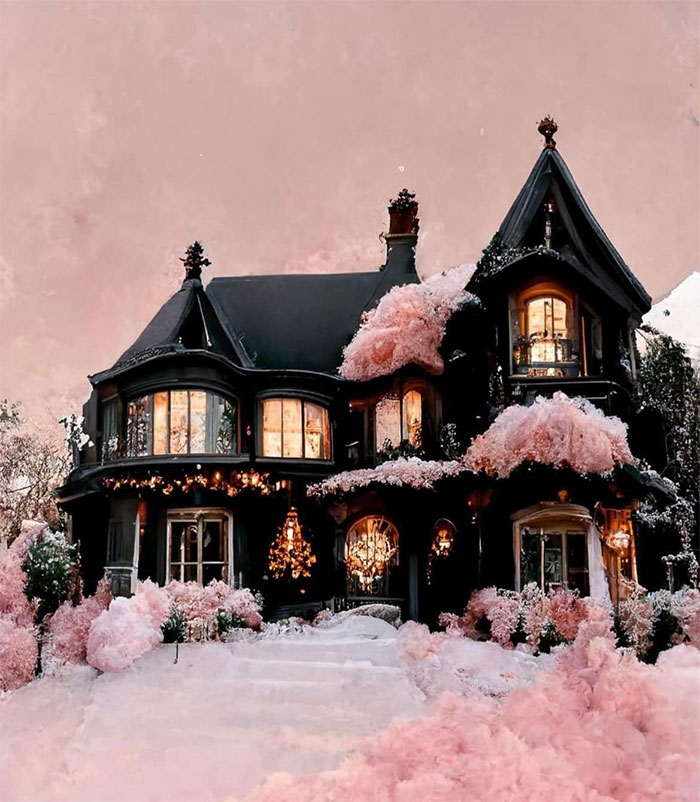A tiny home in Tokyo maximizes natural light and opens up to the city.
:max_bytes(150000):strip_icc():format(webp)/love2-house-takeshi-hosaka-17-76e46213eec746fe9c53ec71299c7822.jpg)
When given the opportunity and the space, most people will build their homes as large as they are able (or allowed). As we well know, larger homes are generally less energy efficient and more expensive to heat, cool, and maintain, and represent a lamentable amount of wasted space.
Thankfully, there are exceptions and we find one such example in Japanese architect Takeshi Hosaka’s thoughtfully designed urban tiny home. Located in a neighborhood near the Tokyo Dome, Hosaka’s Love2 House is a miniature delight that shows that living well in the city doesn’t mean having to take up a lot of space. It’s a masterclass on how to design something small and totally rooted in its urban landscape, as we can see in this enlightening tour via Never Too Small:
Hosaka, who moved from Yokohama to Tokyo in 2015 to teach at Waseda University Art and Architecture School, recounts how he and his wife Megumi finally arrived at building such a small house:
“Originally, we were planning to build a two-story house here. But my wife was reading a book about life in the Edo period [1603 to 1868 AD], where families of four lived in an area of just 9 square meters [97 square feet]. So we thought a single-story house with an area of 18 or 19 square meters [194 or 204 square feet] would be possible for us to live in.”
The house is surrounded by taller homes and residential buildings and sits on a quiet, narrow residential street.
The couple has a small garden on the other side of the street, where they like to spend time growing things.
:max_bytes(150000):strip_icc():format(webp)/love2-house-takeshi-hosaka-16-a06cd9e2d4264088b5c5f33c3f27f094.jpg)
The home’s facade has a large picture window, which in fact is a glass door that slides off to one side, thus opening up the house to the city. As Hosaka explains, the couple likes to sit on this reinterpreted version of a stoop, while chatting and drinking tea.
:max_bytes(150000):strip_icc():format(webp)/love2-house-takeshi-hosaka-6-fa14a676df95494c9589e447dc9b8a56.jpg)
The house’s unique funnel-shaped form is a bit enigmatic at first. But as one enters through the front door—which is actually located off to the side of the sliding glass door—one’s eyes are drawn up to the incredible skylight, which channels light down, making the tiny space feel much larger.
:max_bytes(150000):strip_icc():format(webp)/love2-house-takeshi-hosaka-5-7bb94317570e48f19b12b15451e51743.jpg)
As Hosaka explains, his initial research on the sun’s daily and seasonal paths showed that in winter, the site would receive very little sunlight.
:max_bytes(150000):strip_icc():format(webp)/love2-house-takeshi-hosaka-2-63197e6e27b143838c7f4f3e00f08aec.jpg)
Discouraged, but not defeated, Hosaka eventually found a solution by envisioning the home as a light-catcher of sorts, by designing it to be taller and more vertically voluminous, so that even in winter, there is a play of soft light throughout the space.
:max_bytes(150000):strip_icc():format(webp)/love2-house-takeshi-hosaka-3-2ce6722ee3fa4214aacabb1e5a724bf1.jpg)
The home’s entire length is organized along the lines of the couple’s daily habits and hobbies, ranging from cooking at home to housing their large collection of vinyl records, books, and other sentimental items, says Hosaka:
“Although it is small, we designed it so that we are able to enjoy reading books, listening to music and doing our hobbies. We wanted to be able to do all of this in this small house.”:max_bytes(150000):strip_icc():format(webp)/love2-house-takeshi-hosaka-18-1239be58d35743888bcf85fa8d8fafab.jpg)
A large multipurpose table, set upon an upcycled sewing machine platform, occupies the front part of the house.
:max_bytes(150000):strip_icc():format(webp)/love2-house-takeshi-hosaka-7-3585b6a960444a3ba70b50062da26af0.jpg)
Here there is also a set of built-in shelves that display the couple’s favorite mugs and teapot.
:max_bytes(150000):strip_icc():format(webp)/love2-house-takeshi-hosaka-1-882b0975cd294b3db1ee32861a96ab18.jpg)
The middle of the home is where the kitchen can be found. The counter is made with easy-to-clean stainless steel, and includes a big sink, a stovetop, a mini-refrigerator, and a compact grill under the counter for broiling fish.
:max_bytes(150000):strip_icc():format(webp)/love2-house-takeshi-hosaka-4-e13fe84dd5184081a1df98775d1bfe31.jpg)
Hosaka also cleverly recycled a food cart that is typically used on airplanes, and converted into a portable pantry.
:max_bytes(150000):strip_icc():format(webp)/love2-house-takeshi-hosaka-12-6300323768fd457c9cadc50282f116fa.jpg)
Next up is the couple’s sleeping area, which can be found behind a half-partition. Here there is also space for a small closet.
:max_bytes(150000):strip_icc():format(webp)/love2-house-takeshi-hosaka-10-dd5b063e2e85432ea8ef19b9c7e20cde.jpg)
Also in the rear is the bathroom, which is split into two rooms—one with a toilet, the other a shower. Here the toilet room is narrow, but it has a tiny sink to wash one’s hands.
:max_bytes(150000):strip_icc():format(webp)/love2-house-takeshi-hosaka-14-81024d74fc5b478a87b538529271711a.jpg)
The shower room is accessible via a door off to the side, and it also another door connecting to a outdoor bathing area, which has an exterior tub for soaking in—a hidden retreat in the middle of the city.
:max_bytes(150000):strip_icc():format(webp)/love2-house-takeshi-hosaka-15-3c91e1d5de584bc2b236b3359a4ce469.jpg)
While admittedly this small home is a bit heavy on the concrete, which we know is not exactly an eco-friendly material, Hosaka has nevertheless managed to create an extraordinary space within this relatively dense neighborhood of one of the biggest metropolises in the world. It’s no small feat, and Hosaka believes that designing a small space well—and connecting it to whatever urban nature there is available—is the secret to making an urban tiny home more livable:
“When designing a small house, I look to create a house with big lines or big open spaces. For example, Love2 House has a high ceiling, with a dynamic skylight. In cities, there are still small pockets of nature. So then you can enjoy both nature and the city. I think that’s what makes the city a good place to live.”








